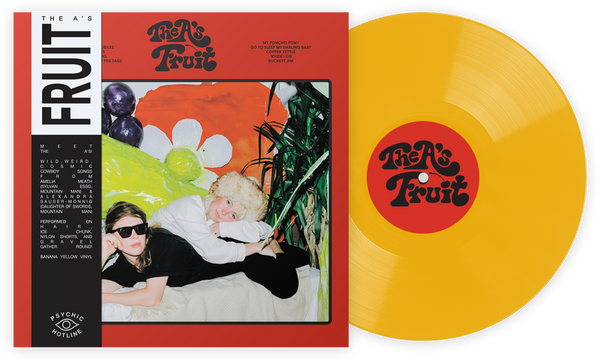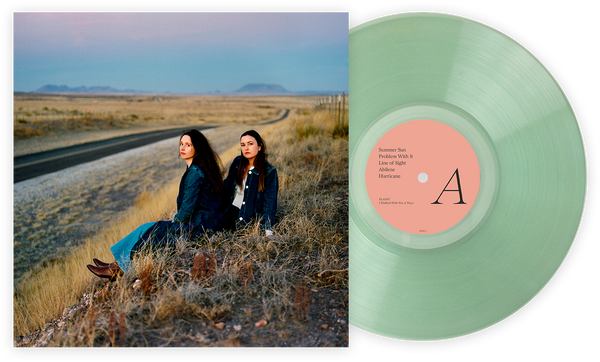Googoosh: Sürgünde bir İran divasının hikayesi
Orta Doğu'nun en çok sevilen pop yıldızlarından birine giriş
1960'lar ve 70'lerde, eğer özgür düşünen bir hippiydiyseniz ve Orta Doğu'da backpack yaparak Hindistan veya Afganistan'a gitmekteyseniz, kaçınılmaz olarak İran'ın başkenti Tahran'da durursunuz. Ve kalışınız sırasında — yaptığınız her şeyin yanı sıra — sokaklarda, kulüplerde ve kafelerde bölgenin en canlı ve çeşitli müzik sahnelerinden birine rastlarsınız.
nO dönem İran, değişim içinde bir ulustu. Şah, ABD destekli bir darbe sonrasında görevine başlamıştı. Batılı çıkarları, petrol baronları ve para akışını beraberinde getiren bir modernleşme çağı başlattı, ancak aynı zamanda klasik müzikal ve rock 'n' roll'u da getirdi. Bu yabancı sesler — bozulmuş psikadelik, R&B, Hint popu, Latin ritimleri ve Amerikan Top 40 — İran'ın geleneksel müzikleri ile birleşerek kendine özgü bir müzikal melez, İran popunu oluşturdu.
nİran pop müziği, funky ritimleri ve ölçüsüz akorlarıyla — Batılı enstrümanlar kullanılarak çalınmış ve Batılı tarzda düzenlemeler ve prodüksiyon değerleriyle kaydedilmiştir — arabalar, kulüpler, kafeler, pazar yeri ve Cuma pazarı etrafında yankılanıyordu. Her yerdeydi. Her şeyi kapsıyordu.
nVe tartışmasız kraliçe, İran popunun Beyoncé'si, Googoosh'tu.
Googoosh was ever-present. She was in films and on TV. Her hits were on the radio. She was a child star in the ’60s and dominated popular media in the ’70s. Her hairstyles, outfits, marriages, triumphs and heartbreaks were fodder for the tabloids. She performed in theaters, clubs and cafés. She played royal functions and was the darling of the Iranian monarchy, although as times changed, her songs were sung as revolutionary anthems.
In 1979, at the time of the Revolution, Googoosh was almost 30 and at the top of her game. But her world was about to change. The Islamic Revolution — and the subsequent founding of the Islamic Republic of Iran — had different ideas about music. The regime was not a fan of Iranian pop and in particular, didn’t approve of female performers, and Googoosh — for much of the next 20 years — was silenced.
Two decades later, in 2000, she left Iran and re-established herself as a leading figure of the Iranian diaspora. Today she tours, records and plays to massive crowds in places like Toronto, Los Angeles and Dubai. She’s also become something of an elder statesman and advocates on behalf of human rights and women’s rights in Iran.
Here, we dig through Googoosh’s extensive catalog, discuss her musicianship and music, explore her cultural impact and legacy, and tell the story of an immense and — at least to most Westerners — little-known talent.
Googoosh was born Faegheh Atashin on May 5, 1950. “Iranian stars were known by a single first name,” GJ Breyley, a senior research fellow at Monash University in Australia and an expert on Iranian pop music, says about the origin of Googoosh’s stage name. “She began her career as a child, so the nickname was fitting — and it stuck. It is an Armenian name, usually used for boys, and it refers to a bird.” Her parents were Azerbaijani, which is an ethnic minority in Iran, and they divorced when she was an infant.
Googoosh made her first radio appearance at six and was in her first movie at eight. At 10, she appeared on Iran’s first television program. She scored her first hit, “Sang-e Sabur,” while still a child as well. By 1970, before she was 20, she had already appeared in 20 films and was a national sensation. She was a singer, first and foremost, but like the early careers of Elvis Presley and the Beatles, appearing in films was part of the package.
Growing up in public, Googoosh was positioned to break taboos long associated with female performers. “She was represented as non-sexual and thus escaped the association with perceived immorality that plagued other female Iranian film stars,” Breyley and Sasan Fatemi write in their book, Iranian Music and Popular Entertainment. “Of course, attitudes around ‘morality’ were shifting in general at this time, among some sections of society.”
Iran, under the Shah, was modernizing, which, in some instances, also meant adopting more progressive attitudes toward music and in particular, female performers. But change was slow in coming — it was never universal or total — and came to a grinding halt following the Islamic Revolution in 1979. But in the interim, in the 1960s and ’70s, the Shah’s reforms — although self-serving and controversial — along with an influx of Western businessmen, oil workers and backpacking hippies, brought Western musics and tastes to a traditional and Eastern-looking Iran.
Those new sounds, and in particular, Western instruments like guitars, bass and drums, combined with the rhythmic sensibilities, timbre and melodic inflections of traditional Iranian music — a true synthesis of east-meets-west — are the hallmarks of Googoosh’s music.
“[Googoosh’s] music was more sophisticated and more westernized than anything hitherto in Iranian pop music,” Houchang Chehabi writes in his essay, “Voices Unveiled: Women Singers in Iran.” “[Her] melodies were underpinned by harmonic progressions of some complexity, orchestra arrangements were imaginative and colorful, and the blending of eastern and western stylistic elements was smooth.”
“Googoosh’s singing voice has lighter and smoother qualities than the voices of her Iranian predecessors, qualities heard more often in western singers,” Breyley and Fatemi write. “However, her vocal style maintains touches of the embellishment traditionally favored by Iranian listeners … Googoosh generally ‘bends’ her tones just enough to maintain a sense of the expression of deep emotion, while avoiding an impression of excess, seen by some in the 1960s and 1970s as old-fashioned.”
But the real excitement — at least, if you’re an extreme music nerd — is her rhythms.
Iranian pop is in 6/8 time (like the Beatles songs, “Oh! Darling” and “I Want You (She’s So Heavy)”) and that feel, according to Breyley, is maintained in most Westernized Iranian pop as well. But check out this live performance of Googoosh’s song, “Sekkeye Khorshid,” and try counting the pulse:
Although the drummer (most likely Bartev, an Iranian A-list musician) counts off the tempo, the music’s abrupt stops, interwoven melody lines, and polyrhythmic feel (watch the high-hat), make toe-tapping difficult for listeners accustomed to 4/4, fist-pumping rock ’n’ roll. Googoosh’s mastery of these complex rhythms — not to mention her almost effortless-looking performance — is a testament to her virtuosity and outstanding musicianship. Her bands, in addition to Bartev, featured people like Vazgen on keyboards, Morteza on sax, Fereydoun on drums and percussion, Armik on guitar and Parviz on bass, and they were — not surprisingly — some of Iran’s top players.
In the studio, her arrangements were often lush, featured strings and owed an obvious debt to Italian composer Ennio Morricone. But despite that rich orchestration, many of her songs — probably because of their faster tempos and rhythmic complexity — managed to avoid sounding sappy, sugar-coated or sentimental. This clip of “Nemiyad,” lip-synced for Iranian television, is a good example:
Googoosh was a ubiquitous presence in the decade preceding the Revolution. “She dominated popular media in the 1970s, so her hits were everywhere,” Breyley says. “They were stylistically innovative and well-produced, and influenced the music of other pop stars.” However, Iran’s music scene — similar to the U.S. and Britain in the late ’50s and ’60s — was singles-driven, which makes understanding her discography a challenge. Her songs were often associated with films and, in addition to 45s, were available on soundtracks. Otherwise, 12-inch, long-playing vinyl doesn’t factor much into her Iranian-era output.
But she did step onto the international stage. “[Googoosh] began to participate in international music festivals and received the first prize for her French songs at the Cannes Festival in 1971,” Kamran Talattof writes in “Social Change in Iran and the Transforming Lives of Women Artists.” “She also earned high recognition for her Italian and Spanish presentations for the Sanremo Music Festival in 1973.” She recorded in English, too, and if you’re persistent — and dig through enough crates in L.A. — you might stumble upon her covers of Sly Stone’s “I Want To Take You Higher” and Otis Redding’s “Respect” (both are 7-inch 45s and sell for about $500). Many of her singles have been collected and reissued as multi-disc compilations by various L.A.-based Iranian music labels, although the coolest is a collection of B-sides and cassette-only rarities from the U.K.-based label, Finders Keepers.
As the ’70s wore on and Iran inched ever-closer to revolution, Googoosh’s music became identified with the opposition. “She was a favorite in ruling circles, but in the years before the revolution her songs were interpreted as being sympathetic to the opposition against the Shah,” Chehabi writes. “She had the opportunity to emigrate — many pop stars did — but stayed in Iran despite the revolutionaries opposition to pop music.”
She was touring the U.S. when the revolution broke out, but chose to go back to Iran. She was arrested and interrogated upon her return, although accounts differ as to what happened after that. “Her passport was taken,” Breyley says. “But she also says she chose to stay in Iran as long as she did, partly to be with ‘her people,’ to go through something of what they were going through.”
She stopped performing as well. “All clubs, cabarets, and bars were also closed down,” Talattof writes. “Even Googoosh, who had promised to sing her ‘My Dear Lovable Sir,’ a popular anthem during the revolutionary movement in honor of the revolutionary leader, was not an exception. The Ayatollah said that he did not want to hear her.”
But her story doesn’t end there.
In 2000, after 20 years of silence, Googoosh was granted a passport during the reformist government of Mohammad Khatami and began plotting her comeback. She launched her first tour in 22 years, which culminated with a performance in Dubai on the eve of the Persian New Year. “It has been like a rebirth for me,” she told Time magazine in March, 2001. “I had really felt like it was all over. I worried I wouldn’t have either the chance or the ability to sing again.”
She needn’t have worried (at least about her musical prowess). Check out this performance of “Pishkesh” (the studio version is on the Finders Keepers’ release) from her 2000 tour. Her musicianship is stellar, her performance looks effortless — despite the song’s intricacies and rhythmic complexity — and her band, as before, are the music’s best players.
Eighteen years later, Googoosh is still at it. She splits her time between L.A., Toronto and Paris. She tours, sells out arenas — although you might not know about it if you don’t read Farsi-language newspapers — and continues to record. She’s also taken on a more active activist role.
“Our young people need to make every effort to secure their rights,” she said in that same Time interview. “As you know, Iranian young people have nothing, no leisure, no privacy or comfort in their lives — although I know my saying this will create difficulties for me later. They need to build their future, the country, and their own lives. They need to be the determining force in their own lives. They have to force and fight, as they are now, with all the difficulties they are currently facing.
“To achieve anything, people must work this hard. For me, I’ve put in tremendous effort these 21 years to be able to do these concerts. My life has been rife with difficulties, though I know comparatively, many may have been far worse off than me.”
Tzvi Gluckin serbest yazar ve müzisyendir. 1991 yılında NYC'deki Ritz'te sahne arkasındaydı ve Bootsy Collins'ın yanında duruyordu. Hayatı asla aynı olmadı. Boston'da yaşıyor.
Related Articles
Kulübe Katıl!
Şimdi katıl, 44 $'dan başlayan fiyatlarlaExclusive 15% Off for Teachers, Students, Military members, Healthcare professionals & First Responders - Get Verified!












